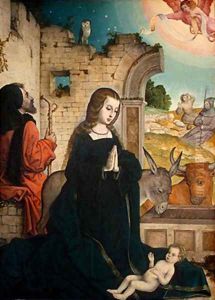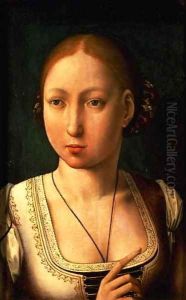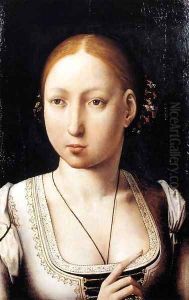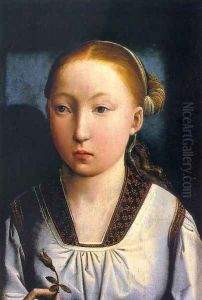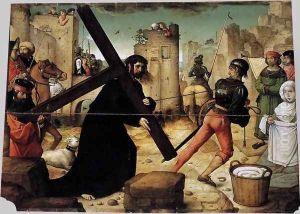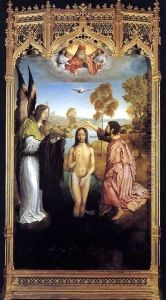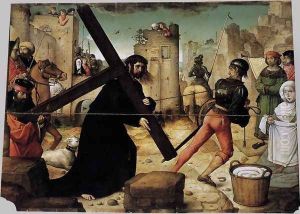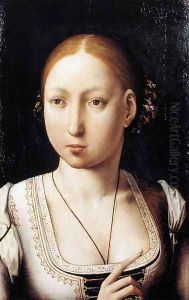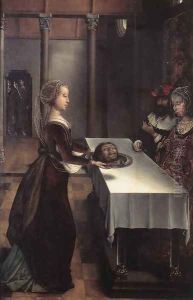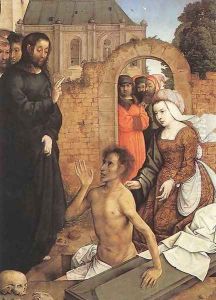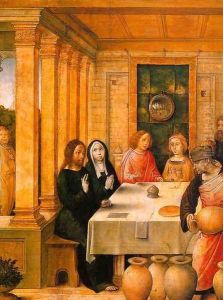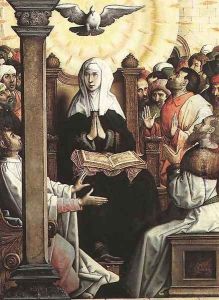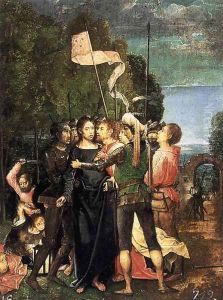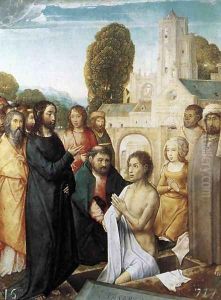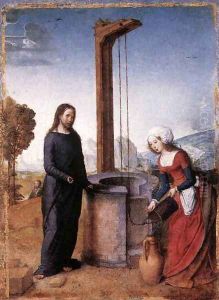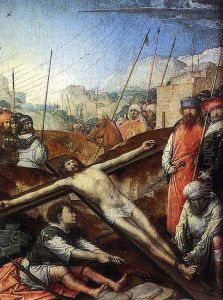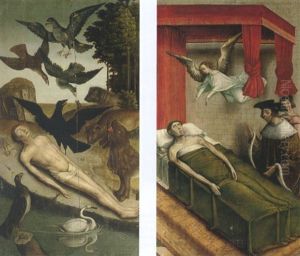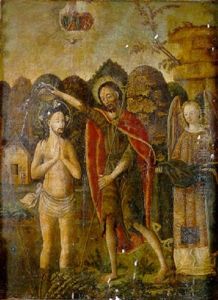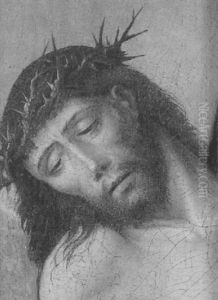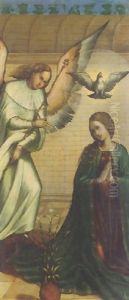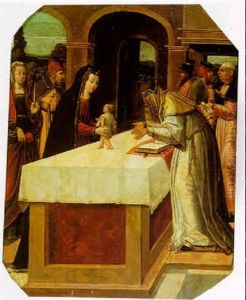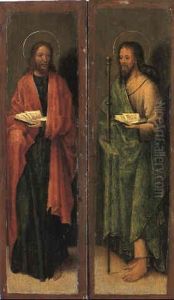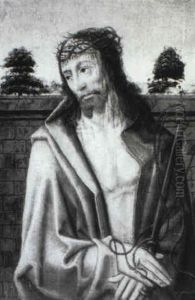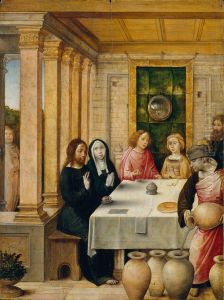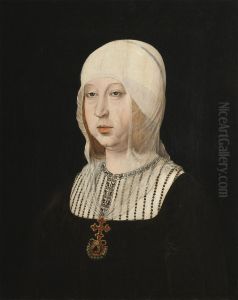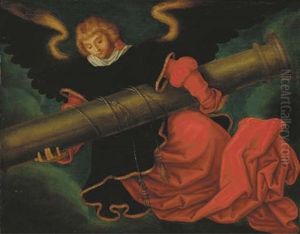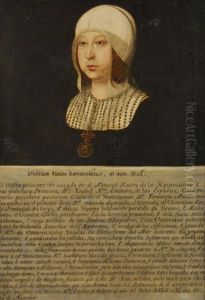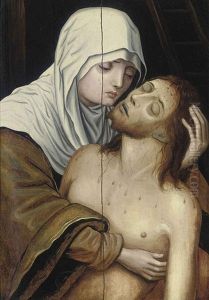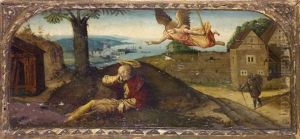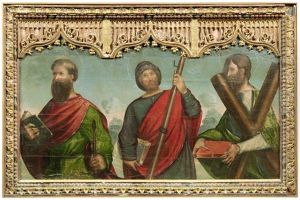Juan De Flandes Paintings
Juan de Flandes, whose real name is presumed to be Jan Sallaert, was a painter of Early Netherlandish origin who was active during the late 15th and early 16th centuries. He was born around 1460, and his moniker 'de Flandes' suggests he was of Flemish descent, indicative of a connection to the region that is present-day Belgium.
Juan de Flandes is particularly noted for his work at the court of Queen Isabella I of Castile in Spain. His career in Spain likely began in the 1490s, and he served as a court painter to Isabella from 1496 until her death in 1504. During his tenure, he produced numerous small-scale religious panels, many of which were for the queen's personal devotion, as well as portraits and larger altarpieces. His style demonstrates a synthesis of the detailed realism characteristic of Flemish art with the rich color and expressive forms found in Spanish painting of the time.
After the queen's death, Juan de Flandes continued to work in Spain, receiving commissions from various religious institutions. One of his most significant works from this period is the altarpiece for the Collegiate Church of San Salvador at Palencia, which is characterized by a refined and meticulous technique.
Despite his significant contributions to the Spanish Renaissance, details about Juan de Flandes's life and training are scarce. It is believed he may have been trained in the workshop of Early Netherlandish master Hugo van der Goes. Juan de Flandes's works are treasured for their blend of northern European precision with the emerging Renaissance sensibilities in Spain. His influence is evident in the work of subsequent generations of Spanish painters.
Juan de Flandes's death is recorded in 1519. His legacy endures through his surviving works, which continue to be studied for their technical mastery and their role in the fusion of Flemish and Spanish artistic traditions during a pivotal moment in European art history.
